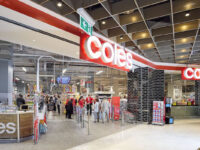 “When you come down to the barrio
“When you come down to the barrio
To get a feel for the people’s scenario
It’s your grand opportunity
To steal a march on the enemy”
Powderfinger
I started my retailing career in Woolworths, towards the end of the Paul Simons’ ‘fresh food people’ period, and in those days our department stores and Woolworths where known as very credible training grounds in retail, with a relentless pursuit to achieving perfection in the noble art – and the science of achieving the ‘detail of retail’.
Simons and his senior team understood implicitly that the board and senior team where one sounding board to understand what was going on in the business, however the even larger source of the reality was in the shops themselves. Regular visits to the shops by Simons, often on weekends, mostly unannounced in casual wear, talking with customers, watching the customer service and queue times, checking the way customers walked the shops, category management, out of stocks, pricing through to marketing compliance, look of the shop and organisation, showed this CEO the real health of his business. Needless to say, conversations with his executives became more real and actionable both in accolades, brickbats and actions.
The price of marmalade mattered more than the share price on any given day and no CEO was ever too busy to visit a shop. Today we see the CEO visits branded as the royal tour with carpets rolled out and name badges in place . The royal tour was never a focus for executives of Simons ilk, although a chat with store staff was; and it was almost impossible for the hubris and boardroom ‘bull’ to ever see the light of day in that period.
This became the legend and folklore of the organisation with other executives following this model religiously and a much healthier focussed organisation thrived – look into the business of high performing ‘fit’ retailers globally and domestically and you see that executives led by the CEO spend proper time in the shops providing leadership and making relevant decisions based on their experiences, not somebody else’s (other than their customers).
In my latter time at Westfield, I saw a similar approach by Frank Lowy, regularly in his malls, talking with his customers and observing the detail of his retail, so we see that this behaviour runs deeply in the attitude and focus of some of our greatest business people and leaders. It’s not the stuff of MBA’s per se, although it is mandatory in the university of retail honours program.
I believe that this is a factor in the problems that Woolworths face today, running the business by remote, looking for the best looking deal, expansionist without a fully detailed understanding of the real business being done on the floor.
Interesting and correct, to see Woolworths adopting a back to the basics retail strategy as a key element of their turnaround, controlling what they can directly control.
The question remains as to whether they will be focussed enough on the detail of retail, or will they have already given the march to the enemy?
Brian Walker is founder and CEO of Retail Doctor Group and can be contacted on (02) 9460 2882 or brian@retaildoctor.com.au.















